Sweet home Havana: Where to eat and drink in the Cuban capital
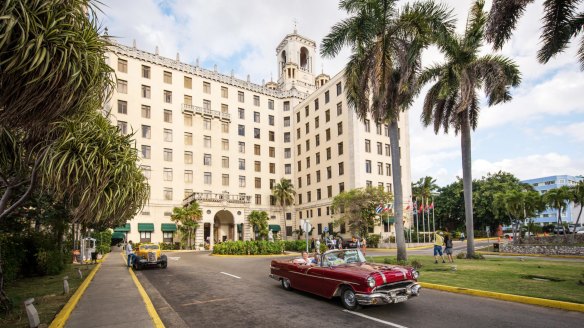
"And because this is Cuba, everyone has sugar in their coffee," says our guide, as we stop for refreshments on our walking tour of old Havana. To prove the point, if you order a cafe Cubano, you'll receive a brew prepared with a paste of espresso and sugar.
Perhaps the nation's sweet tooth can be attributed to natural abundance. At a certain time in its history, Cuba was considered to have a one-crop economy: sugar. As with almost all of the Caribbean, Cuba was a valuable part of a European empire established, in part, for sugar production.
This may explain why the milk that accompanies our morning cuppa at the hotel is already heavily sweetened, anticipating the local craving for a sugar hit. We learn to ask for black coffee, and sneak some of the breakfast cereal milk to whiten it ourselves.
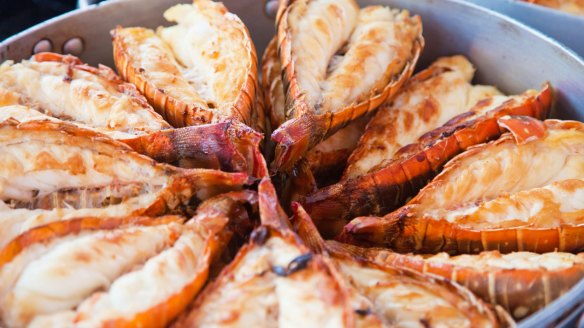
Today, as we sit with our drinks at a table outside Cafe El Escorial in the grand Plaza Vieja, one of the busiest squares in Havana, the real pleasure is in watching the passing parade. Here, wealthy residents used to hang over balconies to view fiestas, bullfights and executions. We are treated to a troupe of brightly costumed stilt-walkers weaving through the bystanders.
Havana is a sensory feast – grand colonial architecture, shiny and colourful 1950s cars, everywhere the sound of music and a devotion to gastronomic pleasure.
It comes as little surprise that Cuba's most highly recognised film is named Strawberry and Chocolate (Fresa y Chocolate), and includes a scene at its best-known ice-cream parlour, Coppelia, a two-storey flying saucer of an edifice, built in the '60s by Castro (himself an ice-cream lover). The two male protagonists meet here, and the choice of strawberry ice-cream over chocolate becomes an allusion to gay sexual preference.
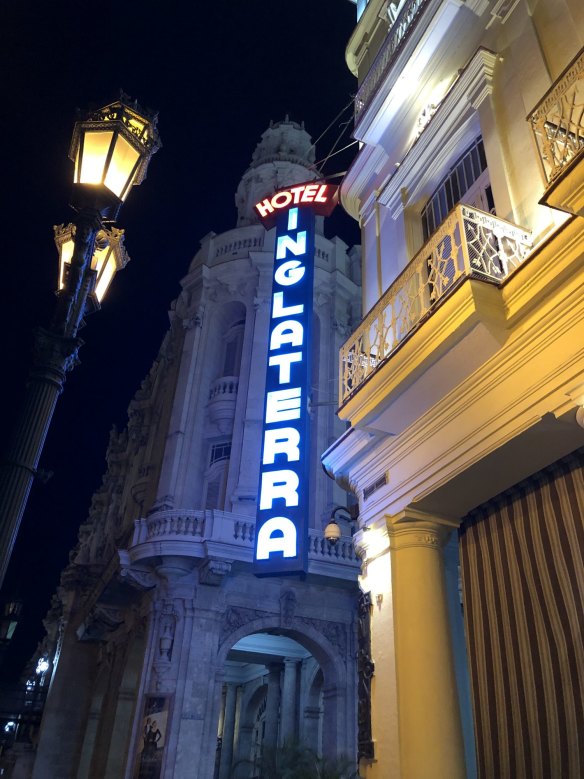
The 1993 movie boosted visitor numbers to Coppelia and also sent fans in search of the apartment block La Guarida, in which the gay hero lived. In a splendid case of life imitating art, the apartment owner decided to convert his home into a restaurant.
Now widely regarded as Havana's best restaurant, you definitely need a booking. Set in a once grand mansion that has seen better days, La Guarida comes as a revelation once you've ascended the majestic marble staircase, passed what looks like a derelict ballroom with washing hanging out to dry, and entered the warren of restaurant rooms. Even if the food wasn't fabulous – and it is – you'd have to eat here for the ambience. Photos, artworks, knick-knacks and religious items fill the nooks and crannies, many of which look to be left over from the movie set.
We dine on tuna with sugarcane and coconut, ceviche, and a crisp lozenge of suckling pig with an orange-honey reduction. The flamboyantly named staple, Moors and Christians (black beans and rice), is a comforting addition.
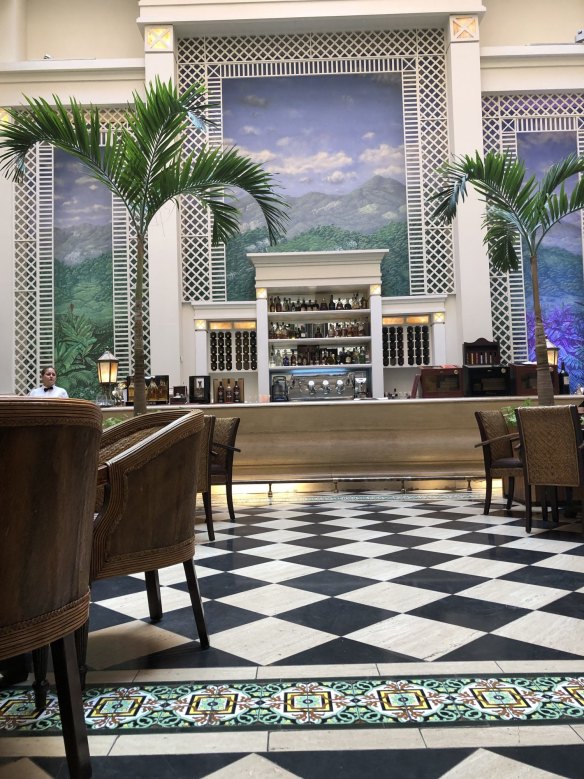
La Guarida is a privately owned paladar. These once illegal restaurants serving meals from family homes are now allowed to operate under tightly controlled licences. They generally offer the more interesting dining options in town.
After you've finished your meal, wend your way up a few more flights of stairs and you'll find the tiny bar perched like a captain's look-out, commanding breezy views across the city rooftops and out to sea.
Havana does good bars. That other sugar product, rum, is the national drink. With cocktails available at the equivalent of $5, it's always happy hour, and even the modest drinker feels she must indulge.
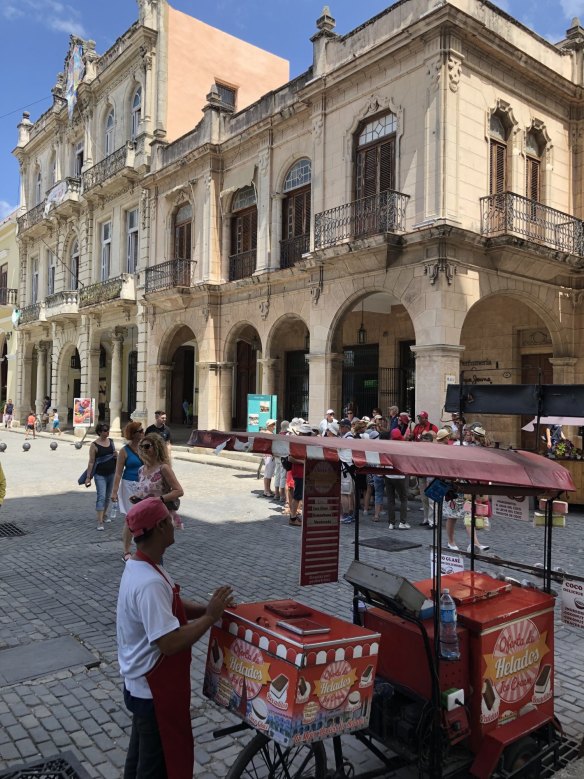
It's hard to go wrong with any watering hole you choose, but don't miss out on Hemingway's favourite, the Floridita, which he believed created "the ultimate achievement of the daiquiri maker's art". Writing about a visit he made there with the author, A. E. Hotchner said, "The two frozen daiquiris the barman placed in front of us were in conical glasses big enough to hold long-stemmed roses."
Also worth sampling is another Hemingway haunt, the Hotel Nacional. This grand institution sitting on a bluff at the edge of Havana Harbour has attracted Hollywood greats and the rich and (in)famous, including American organised crime boss Meyer Lansky. The perfect place to sip your mojito is at a garden seat, watching the peacocks on the lawns. Very convivial.
But you'll find bars wherever you go, from little rooms with live music and patrons spilling onto the footpaths unable to resist the urge to dance, to toney establishments such as the large, colonnaded verandahs of the colonial hotels Inglaterra and Telegrafo fronting Parque Central. Or try the rooftop bar at swanky new Gran Hotel Manzana Kempinski.
One drink you'd imagine losing popularity is rum and Coca-Cola, a beverage that came to define US involvement in Cuba. With relations between the two strained – now more than ever under Donald Trump's presidency – the fallout for Cubans means a decline in tourism. Those who do make it in, including Aussies, find they are penalised with a poor exchange rate on US dollars, and American credit cards are not accepted. In fact, credit cards of any variety are often refused, so you need to carry CUC, the local currency.
Perhaps another effect of this cold war is on food imports. Cuba is prone to shortages, and it is not uncommon to find menu items offered with the proviso "when available". Our favourite breakfast spot, El Cafe, serves the ubiquitous crowd-pleaser, avocado on toast, but only sometimes, so you have to be in luck. However, El Cafe's coffee (you can get a flat white here) and other dishes won't disappoint.
Even our ritzy hotel, Saratoga, has to deal with compromised supply. One day apples make a welcome appearance in the breakfast room, but are not seen again. While this quotidian fruit is elusive on the morning buffet, champagne sits in ice buckets for bottomless refills.
And that's part of the beguiling paradox of Cuba. You may not be able to find a banana at any of the myriad street stalls, but you can dine like royalty on locally caught crustaceans every night of the week, for the price of a hamburger back home. Needless to say, we do.
Though everything is delicious at our regular, Habana 61, it's hard to go past the lobster. You can have it prepared in a tomato ragout, but simply grilled with garlic is best. Shrimp creole, ceviche or any of the other seafood options will round out your meal. At Mas Habana, a funky tapas bar and restaurant, the slightly seared triangles of pink tuna tataki are a generous and beautiful dish, followed, of course, by grilled lobster.
In times gone by, it used to be that a fine meal might be completed with a cigar, one of Cuba's other famous products. Even non-smokers feel compelled to light up a "cuban" when visiting or to take some home as souvenirs. With smoking increasingly on the nose around the world, could one of Cuba's major exports be threatened? Our guide assures us that the reputation and quality of their tobacco is so good, they will be the last country to stop production. He may be right. Or only close ... and no cigar.
Time for sweets
When your national history has been built around sugar, it makes sense to celebrate the stuff. At the Museo del Chocolate, more a cafe-cum-confectioner than a real museum, you can buy bars or filled chocolates by the piece. The woman next to me buying boxloads insists that the rum truffles are the best, and after sampling my mixed pack, I agree.
Cuban desserts go heavy on the sugar and you'll typically find dulce de leche, creme caramel and coconut flan on the menu. For those who can't wait for dinner for their treats, street vendors oblige, selling sugared churros, deep-fried plantains (tostones) and ice-cream (helado). Two have set up near our hotel behind counters in what appears to be an abandoned building. The ice-cream stand sells only one flavour on any day, but in spite of this, long queues form.
But the real place to go for ice-cream is the so-called socialist ice-cream cathedral Coppelia, which Castro built to please the masses and used to thumb his nose at the capitalist US.
Thousands line up from morning to night for this pleasure, and the preferred way to order is five scoops at a time. Coppelia is surrounded by parkland, and diners can enjoy their sweet indulgence seated in the sunshine. This won't be the best ice-cream you've tasted, but there sure is a lot of it. And it's as cheap as (chocolate) chips.
DETAILS
Cafe El Escorial, cafeelescorial.restaurantwebexperts.com
Coppelia, corner Calle 23 and Calle L
La Guarida, laguarida.com
Floridita, Calle Obispo
Hotel Nacional, hotelnacionaldecuba.com
Hotel Inglaterra, hotelinglaterra-cuba.com
Hotel Telegrafo, hoteltelegrafohabana.com
Gran Hotel Manzana Kempinski, kempinski.com
El Cafe, elcafe.restaurantwebexperts.com
Hotel Saratoga, hotel-saratoga.com
Habana 61, paladarhabana61.com
Mas Habana, Calle Habana 308 e
Restaurant reviews, news and the hottest openings served to your inbox.
Sign up